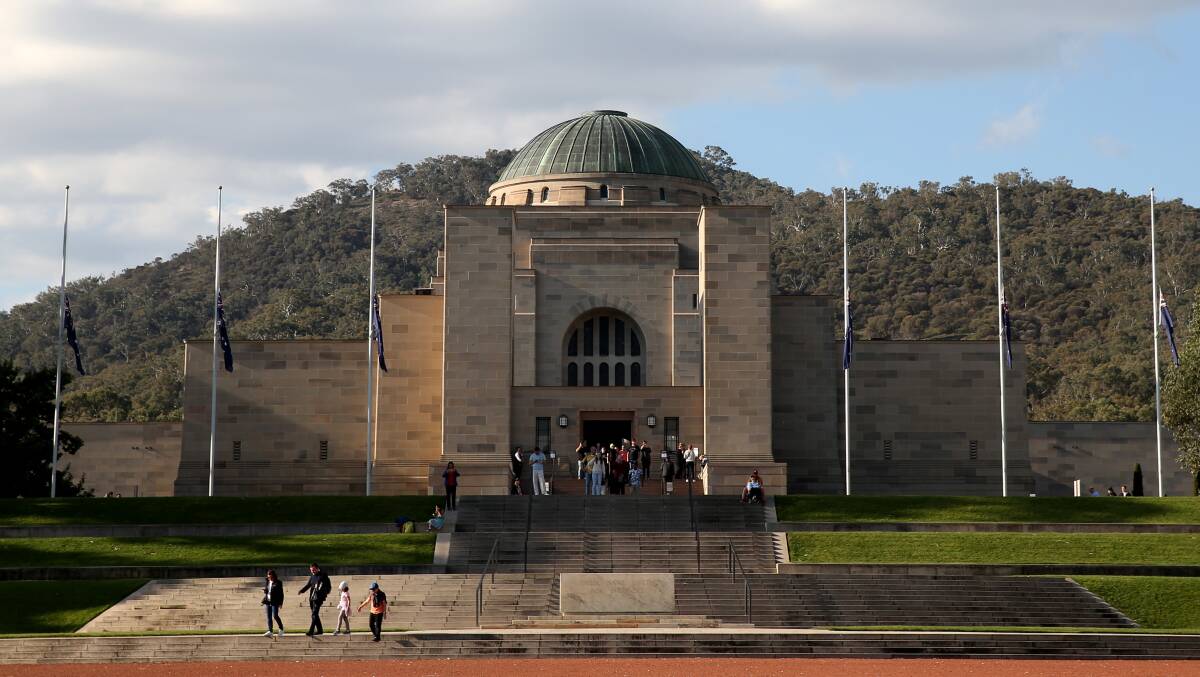
Our system of support for Australian Defence Force veterans and their families isn't perfect, but it is world-class and compares very favourably when compared with other nations.
Subscribe now for unlimited access.
or signup to continue reading
Australians can be proud of the fact that $11.8 billion of their taxes has been budgeted this year to support more than 325,000 veterans and their families.
From service pensions and income support, through to compensation for injuries and treatment for physical and mental health, we have a system which is the envy of our allies.
But a significant part of Australia's respect for our current serving personnel and the veteran community is less tangible, and it can't be measured in strict monetary terms.
The way we commemorate our defence history and tell the story of service and sacrifice is a mark of the respect we have for our military heritage.
In addition to public commemorative events like Anzac Day, the Australian War Memorial in Canberra is the most obvious demonstration of our national respect.
It is an extraordinary gift from previous generations, and keeps our national promise to never forget the more than 102,000 men and women who've paid the ultimate sacrifice to secure the freedoms we all enjoy today.
But the AWM in its current form has its limitations. The Australian War Memorial council has been concerned for several years that it doesn't have the space to properly tell the stories of 100,000 contemporary veterans.
While the stories of both the world wars, Vietnam and Korea are well presented, more recent service in peacekeeping missions and conflicts in Afghanistan and Iraq can't command the attention they deserve due to a lack of display area.
At its heart, the decision to expand the AWM and provide additional space to tell the stories of modern veterans is a sign of respect and a grateful nation publicly saying "thank you for your service".
Over the eight-year period of the AWM development (budgeted to cost $498 million) the Department of Veterans' Affairs will spend almost $100 billion to support veterans and their families. The money for the development is not coming from the DVA budget, and even if it was, it would represent less than 1 per cent of forecast expenditure over that period.
READ MORE:
Living veterans and their families are some of the strongest supporters of the development. They want to be able to walk through the expanded AWM with their children and explain their story of service to our nation, not just the stories of their great-grandparents.
To suggest that it will be a "theme park" is an insult to the AWM council, the staff, volunteers and curators who present our war history to the public with solemnity and respect.
They understand the memorial's place as the soul of the nation. No decisions have been made on the content of the new display areas, so exactly what "theme park" features are the critics referring to?
The memorial redevelopment will be guided by the community through a national public consultation program, already engaging over 4000 Australians, to share what they would like to see in the new gallery spaces.
It is also worth noting that a number of the more recent high-profile critics of the project haven't even asked for a briefing from the AWM, to ensure they are well-informed before reaching for the nearest megaphone.
While the idea for the memorial was conceived on the battlefields of the First World War more than 100 years ago, there have been two occasions where its charter was extended - in 1941 to include the Second World War, and again in 1952 to include all of Australia's wars.
The federal government is funding the development of the Australian War Memorial to future-proof our most sacred national institution and ensure it can keep telling the stories of all service men and women.
We are keeping our national promise to remember them all.
Lest we forget.
- Darren Chester is the federal member for Gippsland and the Minister for Veterans' Affairs and Defence Personnel.

